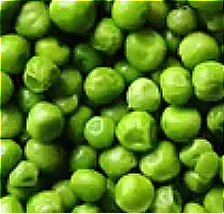| "Descrizione" by Whiz35 (11840 pt) | 2023-Sep-19 15:03 |
Review Consensus: 9 Rating: 9 Number of users: 1
| Evaluation | N. Experts | Evaluation | N. Experts |
|---|---|---|---|
| 1 | 6 | ||
| 2 | 7 | ||
| 3 | 8 | ||
| 4 | 9 | ||
| 5 | 10 |
Hydrolyzed Pea Extract is a natural product obtained from the pea plant, Pisum sativum L. botanical family , Leguminosae or Fabaceae.

The name describes the structure of the molecule:
- "Hydrolyzed" indicates that the pea extract has undergone hydrolysis, a chemical process where a molecule is broken down into smaller parts through the addition of water.
- "Pea" refers to the pea, a commonly known and consumed plant.
- "Extract" indicates that the compound is an extract derived from peas.
Description of raw materials used in production and their functions.
- Pisum sativum Seed (Pea Seeds). The primary raw material that is hydrolyzed to produce the extract.
- Water. The main solvent used for hydrolysis.
- Hydrolyzing agents. Chemicals such as enzymes or acids that help break down pea seed bonds during hydrolysis.
- Preservatives. Added to extend the shelf life of the extract.
Form. It can vary, but it's usually a liquid or a gel depending on the concentration and extraction process.
Color. Ranges from colorless to pale green, depending on the concentration and the part of the plant used for the extract.

Step-by-step summary of industrial chemical synthesis process.
- Pea seed preparation. Seeds are washed and readied for hydrolysis.
- Hydrolysis. The seeds undergo the hydrolysis process using hydrolyzing agents in water.
- Separation. Once hydrolyzed, the liquid is separated from any solid residue.
- Purification. The extracted liquid is purified to remove impurities and undesired substances.
- Addition of preservatives. Preservatives are added to enhance the stability and shelf life of the extract.
What it is for and where
Cosmetics
Skin conditioning agent - Emollient. Emollients have the characteristic of enhancing the skin barrier through a source of exogenous lipids that adhere to the skin, improving barrier properties by filling gaps in intercorneocyte clusters to improve hydration while protecting against inflammation. In practice, they have the ability to create a barrier that prevents transepidermal water loss. Emollients are described as degreasing or refreshing additives that improve the lipid content of the upper layers of the skin by preventing degreasing and drying of the skin. The problem with emollients is that many have a strong lipophilic character and are identified as occlusive ingredients; they are oily and fatty materials that remain on the skin surface and reduce transepidermal water loss. In cosmetics, emollients and moisturisers are often considered synonymous with humectants and occlusives.
Humectant. Hygroscopic compound used to minimise water loss in the skin and to prevent it from drying out by facilitating faster and greater absorption of water into the stratum corneum of the epidermis. The epidermis is the most superficial of the three layers that make up human skin (epidermis, dermis and hypodermis) and is the layer that maintains hydration in all three layers. In turn, the epidermis is composed of five layers: horny, the most superficial, granular, spinous, shiny, and basal. Humectants have the ability to retain the water they attract from the air in the stratum corneum and have the function of moisturising the skin. They are best used before emollients, which are oil-based.
Skin conditioning agent. It is the mainstay of topical skin treatment as it has the function of restoring, increasing or improving skin tolerance to external factors, including melanocyte tolerance. The most important function of the conditioning agent is to prevent skin dehydration, but the subject is rather complex and involves emollients and humectants that can be added in the formulation.
CAS 90082-41-0
EC number 290-130-6
Commercial Applications
Cosmetics and Skin Care. Pisum sativum extract is known for its antioxidant and anti-aging effects. It can stimulate collagen production, enhancing skin elasticity and reducing wrinkles.
Hair Care Products. Owing to its protective properties, it can be incorporated into hair products to guard and fortify hair structure.
| Evaluate |

